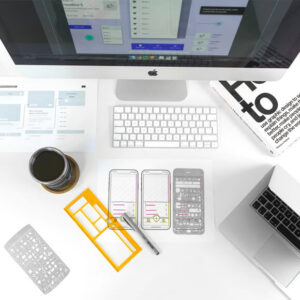When designing a new website, branding and digital marketing are often at the forefront of your mind. However, practical considerations are also very important, such as the user-friendliness of your site.
If your site isn’t easy to use and fast to navigate, all the attractive branding and marketing in the world won’t stop users from clicking away in frustration. You need a site that is zippy, snappy and easy for anyone to use. But how to get there? Firstly, you need to know what you might be doing wrong.
9 ‘usability’ mistakes to avoid in web design
To figure out how well your website is performing on ‘usability’ – consider whether you’ve made any of the following usability mistakes:
- No search box. Ideally, users should be able to find what they want using the navigation tools on your website, but most are used to searching to find specific information just in the same way that they would use a web browser or search engine.
- Pages that are not connected to the home page. Often called ‘orphan pages’, these pages leave users stranded without any easy way to get back to the home page. Each part of your site should be linked to all of the other parts, so that users can move around it smoothly.
- Links opening in new windows. It’s easily done, and understandable that web designers would want external links to open in new windows to keep visitors on their site for longer. However, it wrests control of the interface away from the user, which they are likely to find highly irritating.
- Too much white space. If you’re forcing users to scroll through lots and lots of white space to get anywhere, it might be time for a re-design.
- Not enough white space! A website that is cluttered with content, ads and banners is always going to be difficult, as well as unpleasant, to use. White space frames and emphasises your content, pointing users in the right direction as well as reinforcing your brand message.
- No FAQS or help. You always need to give users a way to find out the answers to their questions and help for their problems, so develop an FAQ that is comprehensive, easy to follow and searchable.
- Disguised links. You naturally don’t want to clutter up your content with really obvious links, but they have to be at least noticeable! It’s helpful for the user for links to be colourful, bold or underlined, and it stops them from accidentally opening links when they click on seemingly innocuous text.
- Poor typography. Fonts and styles are important from both aesthetic and branding points of view, but the most important quality you’re looking for is easy readability.
- Failing to follow conventions. Yes, you want to be different, to stand out from other websites. However, users (who spend time on other websites too) have certain expectations, which you’ll need to meet by falling in line with common web design conventions.
So, how well did your website do on user-friendliness? Can you recommend any other usability mistakes or improvements? We’d love to hear your opinions on this topic.








